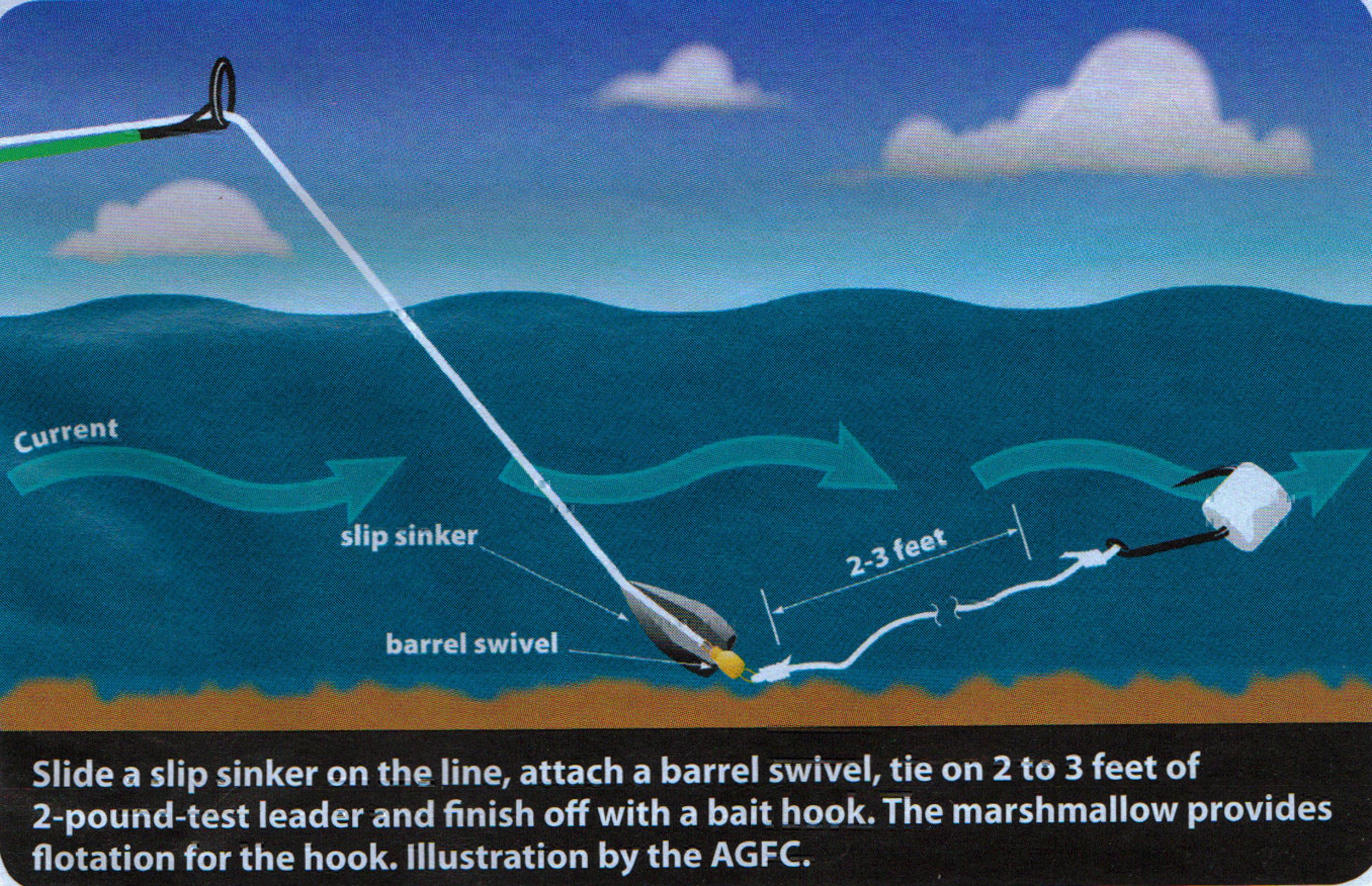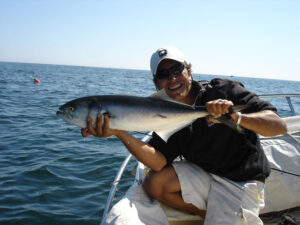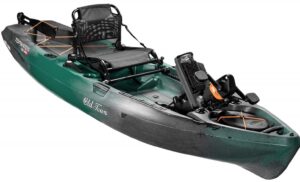Introduction
Trout fishing is a popular and challenging activity that requires the right setup to increase your chances of success. Whether you are a beginner or an experienced angler, having the right equipment and knowledge is essential for a fruitful fishing trip. In this guide, we will delve into the world of trout fishing setup, covering everything from rods and reels to bait and tackle. So grab your fishing gear and get ready to learn how to reel in that elusive trout!
Choosing the Right Fishing Rod
When it comes to trout fishing, selecting the right fishing rod is crucial. The ideal rod should have a good balance between sensitivity and strength. A lightweight rod with a sensitive tip will enable you to detect even the slightest nibble, while a sturdy backbone will help you reel in larger trout without compromising control.
There are various types of fishing rods available, such as spinning rods, fly rods, and baitcasting rods. Each type has its own advantages and is suited for different fishing techniques. Let’s take a closer look at these options:
Spinning Rods
Spinning rods are a popular choice among trout anglers due to their versatility and ease of use. These rods are designed to work well with spinning reels, which are known for their smooth and accurate casting ability. Spinning rods are available in different lengths and power ratings, allowing you to choose the one that suits your fishing style and the size of trout you are targeting.
Fly Rods
Fly fishing is a unique method often associated with trout fishing. Fly rods are specifically designed to cast lightweight artificial flies, mimicking the natural insects that trout feed on. These rods are longer and more flexible than spinning rods, allowing for delicate presentations and precise control. If you are interested in the art of fly fishing, investing in a quality fly rod is essential.
Baitcasting Rods
Baitcasting rods are another option for trout fishing, particularly for those targeting larger trout or fishing in heavy cover. These rods offer more power and control, making them suitable for casting heavier baits and lures. Baitcasting rods require a bit more skill to operate compared to spinning rods, but with practice, they can be a valuable tool in your trout fishing arsenal.
Choosing the Right Fishing Reel
Once you have selected the appropriate fishing rod for trout fishing, the next step is to choose the right fishing reel. The reel is responsible for holding and controlling the fishing line, allowing you to cast and retrieve your bait or lure effectively. There are several types of fishing reels to consider:
Spinning Reels
Spinning reels are the most commonly used reels in trout fishing. They are easy to operate, making them suitable for beginners and experienced anglers alike. These reels have a fixed spool and a bail system that helps prevent line tangles. Spinning reels are versatile and can handle a wide range of fishing lines and lure sizes, making them a popular choice for trout fishing.
Baitcasting Reels
Baitcasting reels are known for their precision and control. They offer a higher gear ratio than spinning reels, allowing for faster line retrieval. Baitcasting reels are particularly useful when casting heavier lures or targeting larger trout. However, they can be more challenging to use, requiring proper technique and practice to avoid backlash and tangles.
Fly Reels
Fly reels are specifically designed for fly fishing and are different from other types of reels. These reels are typically lightweight and have a large arbor design, allowing for quick line retrieval. Fly reels also feature a drag system that helps control the line when fighting a trout. When choosing a fly reel, consider the weight and balance of the reel in relation to your fly rod.
Choosing the Right Fishing Line
Choosing the right fishing line is crucial for a successful trout fishing setup. The fishing line serves as a direct connection between you and the trout, so it’s important to consider its strength, visibility, and sensitivity. Here are the main types of fishing lines used in trout fishing:
Monofilament Line
Monofilament line is a popular choice for trout fishing due to its versatility and affordability. It is made from a single strand of nylon, offering decent strength and flexibility. Monofilament lines are available in various pound test ratings, allowing you to choose the appropriate strength for the size of trout you are targeting. However, monofilament lines have higher visibility in the water, which may spook wary trout in clear conditions.
Fluorocarbon Line
Fluorocarbon line is another option for trout fishing, known for its low visibility and excellent abrasion resistance. It is made from a fluoropolymer material that is nearly invisible underwater, giving you an advantage when targeting cautious trout. Fluorocarbon lines also sink faster than monofilament lines, allowing you to achieve a deeper presentation. However, fluorocarbon lines tend to be more expensive than monofilament lines.
Braided Line
Braided line is a popular choice for anglers looking for superior strength and sensitivity. It is made by weaving multiple strands of fibers together, creating a strong and thin line. Braided lines have a high strength-to-diameter ratio, allowing you to use a thinner line without sacrificing strength. These lines are highly visible and may not be the best choice for trout fishing in clear water conditions, but they excel in situations where strength and sensitivity are paramount.
Selecting the Right Fishing Lures and Baits
Choosing the right lures and baits is essential for enticing trout to bite. Trout are opportunistic feeders and can be enticed by a variety of presentations. Here are some popular lures and baits for trout fishing:
Spinners
Spinners are a classic choice for trout fishing. They consist of a spinning blade and a treble hook, creating flash and vibration that attract trout. Spinners come in various sizes and colors, allowing you to match the hatch and imitate the natural prey of trout. They are easy to use and can be cast and retrieved at various speeds to trigger strikes.
Spoons
Spoons are another effective lure for trout fishing. They have a concave shape that creates a wobbling action as they are retrieved through the water. Spoons come in different sizes and colors, including flashy metallic finishes that mimic baitfish. They can be cast or trolled and are particularly effective in rivers and streams.
Soft Plastic Baits
Soft plastic baits, such as worms and grubs, are versatile options for trout fishing. They can be rigged on a jig head or used with a traditional bait hook. Soft plastic baits come in various colors and sizes, allowing you to experiment and find what works best for the trout in your area. These baits can be fished with a slow retrieve or even left to drift naturally in the current for a more realistic presentation.
Live Bait
For those who prefer a more traditional approach, live bait can be highly effective for trout fishing. Common live baits for trout include worms, minnows, and crickets. Live bait can be presented using various techniques, such as drift fishing, bottom fishing, or under a float. Make sure to check the fishing regulations in your area, as some locations may have restrictions on the use of live bait.
Understanding Trout Behavior and Habitat
Understanding the behavior and habitat of trout is essential for targeting them effectively. Trout are cold-water species and thrive in clean, oxygen-rich environments. They prefer water temperatures between 50 to 60 degrees Fahrenheit (10 to 15 degrees Celsius) and are commonly found in rivers, streams, lakes, and ponds.
Trout are known for their elusive nature and can be quite selective when it comes to feeding. They are often found near structure, such as rocks, fallen trees, or underwater vegetation, where they can find cover and ambush their prey. It’s important to study the water you are fishing and look for signs of trout activity, such as rising fish or insect hatches.
Trout behavior can also vary depending on the time of day and season. They are more active during low-light periods, such as early morning or late evening, when they feel more secure and have a better chance of ambushing prey. Understanding these patterns can help you plan your fishing trips accordingly.
Essential Fishing Accessories
In addition to fishing rods, reels, lines, lures, and baits, there are several accessories that can enhance your trout fishing experience. These accessories can make your fishing trip more comfortable and efficient. Here are some essential fishing accessories to consider:
Fishing Tackle Box
A fishing tackle box is a must-have for organizing and storing your fishing gear. It should have compartments and trays to keep your lures, hooks, weights, and other small accessories neatly organized. Look for a tackle box that is lightweight and waterproof to protect your gear from water damage.
Fishing Nets
A fishing net is essential for landing trout, especially if you plan to release them. Nets with rubberized mesh are preferred, as they are less likelyto damage the trout’s delicate scales and fins. Make sure to choose a net with a proper size and handle length that suits your fishing needs.
Fishing Pliers
Fishing pliers are handy tools for removing hooks, cutting fishing line, and handling fish. Look for pliers with a corrosion-resistant coating and a built-in line cutter for added convenience. Some pliers even come with additional features like split ring tools and crimping capabilities.
Fishing Line Clippers
Fishing line clippers are small, compact tools that make cutting fishing line quick and easy. They are designed to have a sharp cutting edge and can be attached to a lanyard or keychain for easy access. Having a pair of line clippers on hand will save you time and frustration when retying or changing your fishing setup.
Fishing Floats or Bobbers
Fishing floats or bobbers are useful tools for indicating when a trout has taken the bait. They help suspend the bait at a desired depth and provide a visual cue when a fish bites. Choose a float or bobber that is appropriate for the size of trout you are targeting and the fishing conditions you will be facing.
Fishing Weights
Fishing weights, also known as sinkers, are used to add weight to your fishing line to help your bait sink to the desired depth. There are various types of fishing weights, including split shot, egg sinkers, and bullet weights. Choose the appropriate weight based on the fishing conditions and the presentation you want to achieve.
Best Practices for Trout Fishing
Trout fishing requires both skill and patience. To increase your chances of success, here are some best practices to keep in mind:
Observe the Water
Before you start fishing, take some time to observe the water and look for signs of trout activity. Watch for rising fish, jumping insects, or any other indications that trout are present. This will help you identify potential feeding areas and choose the right fishing spots.
Match the Hatch
Trout are often selective when it comes to feeding and will key in on specific types of insects or baitfish. Take note of the insects or baitfish present in the water and try to match your lures or baits to what the trout are naturally feeding on. This will increase your chances of getting a bite.
Practice Stealth
Trout have excellent vision and are easily spooked. To avoid scaring them away, practice stealth when approaching the water. Move slowly and quietly, avoid making loud noises, and avoid casting shadows over the fishing area. This will help you get closer to the trout without alarming them.
Use Light Line and Leaders
Trout have keen eyesight and can detect fishing line in the water. To make your setup less visible, use light fishing lines and leaders. Monofilament or fluorocarbon lines with a low pound test rating are ideal for trout fishing. This will make your presentation more natural and increase your chances of getting a bite.
Experiment with Retrieval Speed
Trout can be finicky and may prefer a specific retrieval speed. Experiment with different retrieval speeds to find what works best for the trout in your area. Sometimes a slow, steady retrieve is effective, while other times a faster, erratic retrieve may trigger more strikes. Pay attention to the trout’s response and adjust accordingly.
Practice Catch and Release
Trout populations are often managed through catch and release practices. If you plan to release the trout you catch, handle them with care to minimize stress and injury. Wet your hands before touching the fish, avoid squeezing or gripping them tightly, and support their body properly. Release the trout gently back into the water, allowing them to swim away on their own.
Conclusion
Trout fishing is a thrilling and rewarding activity that requires the right setup and techniques. By choosing the right fishing rod, reel, line, lures, and baits, understanding trout behavior and habitat, and following best practices, you can increase your chances of catching the elusive trout. Remember to practice catch and release to help preserve trout populations for future generations. So grab your fishing gear, head to your favorite trout fishing spot, and enjoy the adventure of reeling in these beautiful and elusive fish!
FAQs (Frequently Asked Questions)
1. What is the best time of day to fish for trout?
The best time of day to fish for trout is during low-light periods, such as early morning or late evening. Trout are more active during these times and are more likely to bite.
2. How do I choose the right size of fishing line for trout fishing?
The size of your fishing line depends on the size of trout you are targeting and the fishing conditions you will be facing. Generally, lighter lines in the 2-6 pound test range are suitable for trout fishing.
3. Can I use live bait for trout fishing?
Yes, live bait can be highly effective for trout fishing. Common live baits for trout include worms, minnows, and crickets. However, make sure to check the fishing regulations in your area, as some locations may have restrictions on the use of live bait.
4. What is the best way to handle and release a trout?
When handling a trout, wet your hands before touching the fish to minimize damage to their protective slime layer. Avoid squeezing or gripping them tightly, and support their body properly. When releasing the trout, gently place them back in the water and allow them to swim away on their own.
5. How can I improve my casting accuracy?
To improve your casting accuracy, practice your casting technique regularly. Pay attention to your rod position, timing, and power. Experiment with different casting styles and take advantage of casting practice aids, such as hula hoops or target markers.
Summary
Trout fishing requires the right setup and techniques to increase your chances of success. Choosing the right fishing rod, reel, line, lures, and baits is crucial. Understanding trout behavior and habitat will help you locate and target these elusive fish effectively. By practicing best practices such as observing the water, matching the hatch, and using light lines, you can improve your trout fishing skills. Remember to handle trout with care and practice catch and release to help conserve trout populations. Now that you have a comprehensive understanding of trout fishing setup, it’s time to hit the water and reel in those trout!





